Graham Reid | | 3 min read
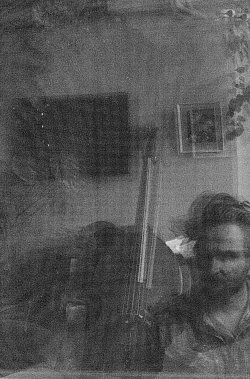
It has been more than seven years since we last heard from rotor plus (sometimes rotor +) when his trilogy of remarkable albums reached their quiet but compelling conclusion with Dust.
Beautifully packaged as limited edition art objects (only 300 of each) with photos and collages in the hardback CD format , these interrelated albums – Aileron in 2000, Map Key Window (2004) and Dust (2013) – defied the convenience of pigeonholing and casual description.
We said the following: “curiously cut-up, processed and unintelligible spoken words, deeply hypnotic but minimal keyboard electronica, gentle beats (and off-beats), subtle found sounds and ambient noise, electro-glitch . . “
But that was just for Aileron.
After that things just got more interesting and seductive.
In a subsequent interview in which we respected the artist's anonymity he joked “it takes about 30 seconds to find out who I am and the various projects I’ve been involved in, so anonymity is not the idea, it’s just the ability to approach the music somewhat uncluttered by personality”.
And that is the way we will allow it to remain for the latest installment and a new direction.
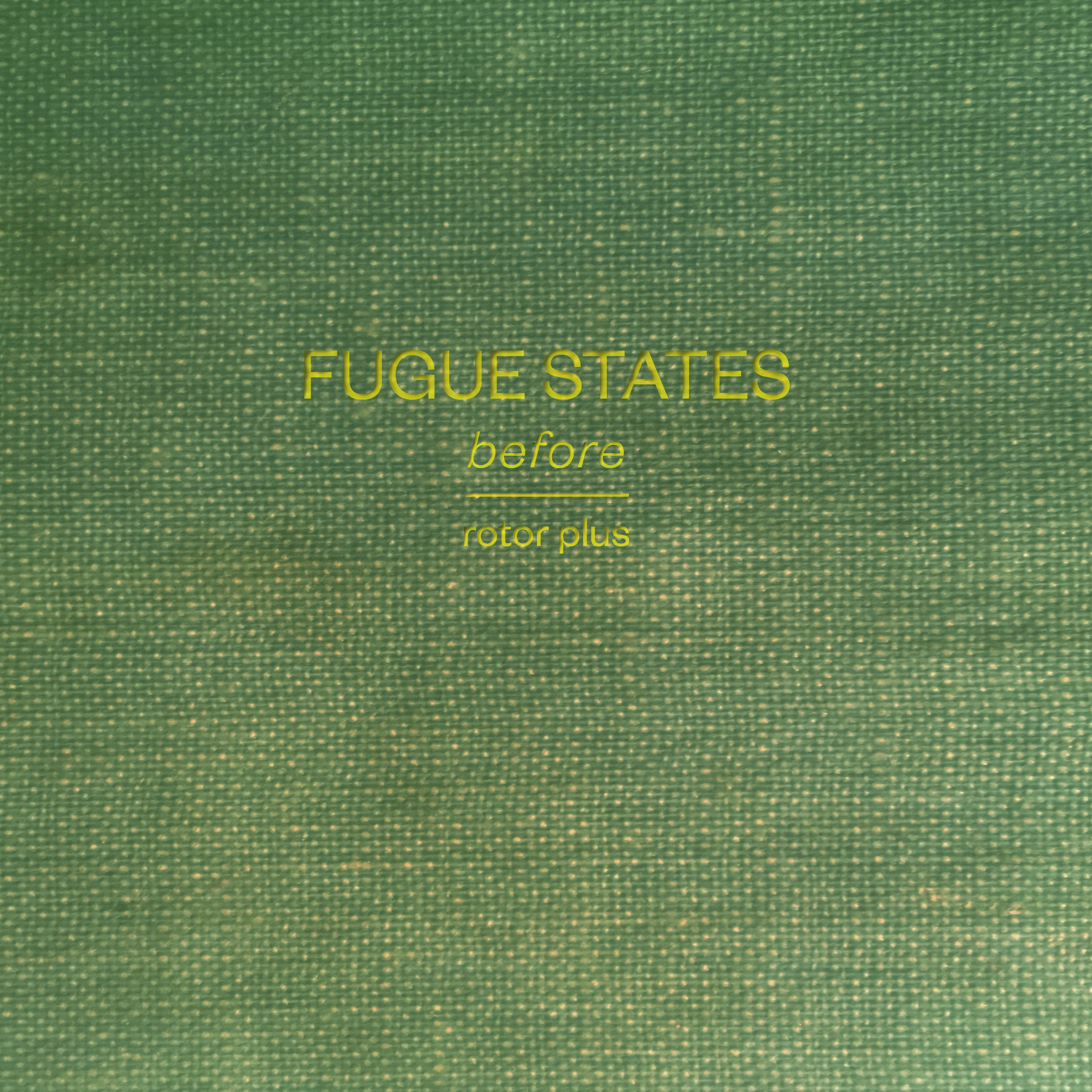 Fugue States-Before is comprised of two pieces, each running more than 25 minutes and incorporating found sound and field recordings alongside strings (viola, violin, cello), oboe, piano, trumpet, clarinet, acoustic bass and soft electronics.
Fugue States-Before is comprised of two pieces, each running more than 25 minutes and incorporating found sound and field recordings alongside strings (viola, violin, cello), oboe, piano, trumpet, clarinet, acoustic bass and soft electronics.
The first of the two parts is entitled Fugue States - before: i awoke in a dark wood, and the second is Fugue States-after: the beautiful background.
rotor plus says the idea of the fugue state – in which memories can become disassociated and those suffering from it can feel themselves to be another individual – played right into the zeitgeist where we live in a world of constructed collectivism and divisive neuroses about the present and future.
Considering that, allowed for thinking about sound and music in a new way.
Here then are musical fragments drawn together from parts of the memory, and where the field recordings of ambient sound and found sounds (wind, creaks) work in counterpoint or harmony to create a different listening and/or experiential effect.
At times on Fugue States-before this can mean a brief but abrupt intrusion of sound across a skeletal palette of piano, at others a sense of unresolved unease. But mostly there is a sense of a half-aware state where dreaming and waking shift or are interchangeable.
Silence is a key component here also.
Titles within the sonic arc of Fugue States-before are: a hill to die on; undone; what is like to be a river (set on fire)?; pulled from dark water; and sublimation.
You can feel these titles/moods as the music unfurls.
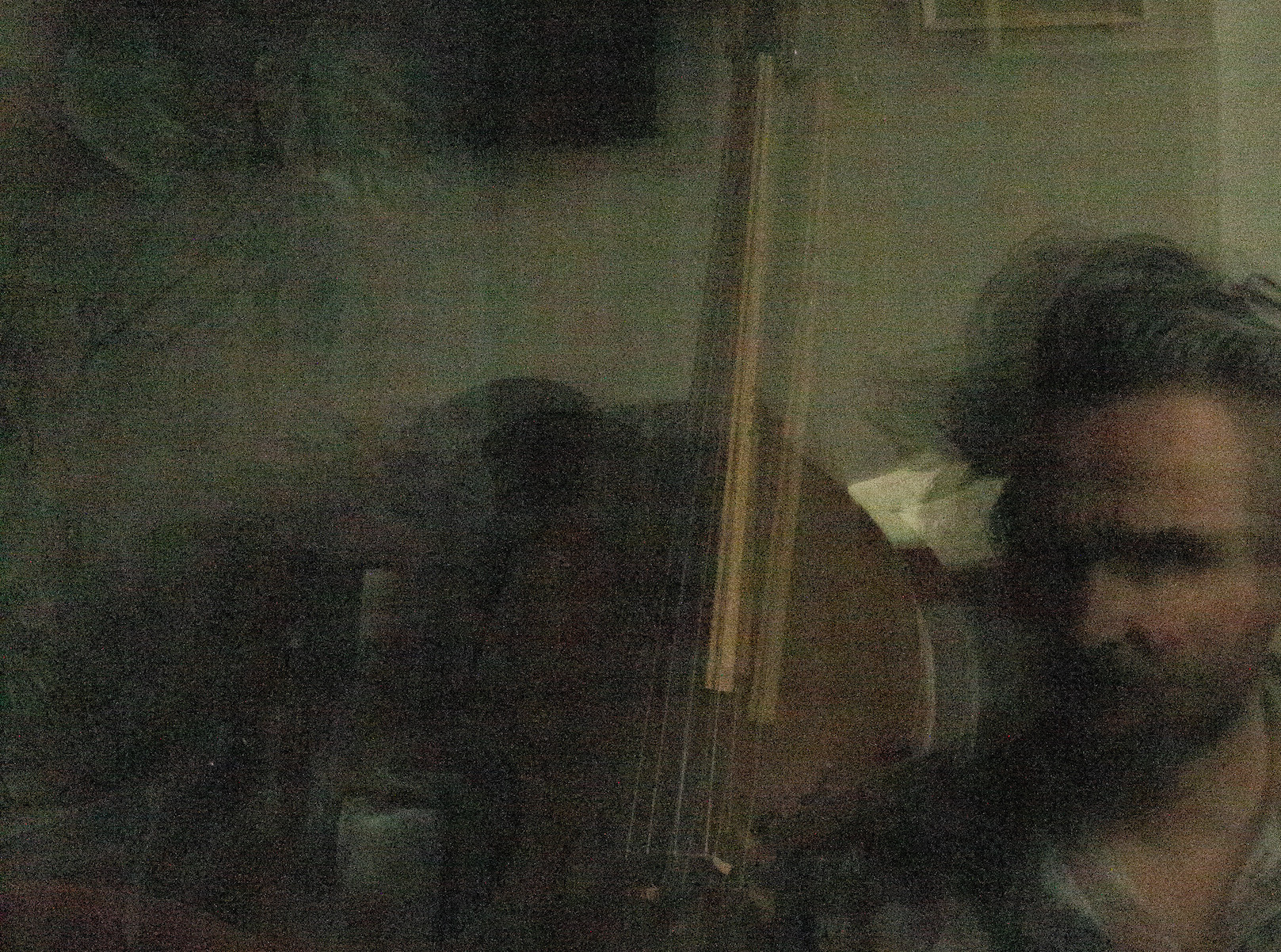 The intense, sometimes romantic and at times almost silent Fugue States-after comes with the following titles: distances without horizons, the demon-haunted world, beneath the waves, another empty room beyond the tide (dedicated to the late Mark Hollis of Talk Talk), elegy and another door.
The intense, sometimes romantic and at times almost silent Fugue States-after comes with the following titles: distances without horizons, the demon-haunted world, beneath the waves, another empty room beyond the tide (dedicated to the late Mark Hollis of Talk Talk), elegy and another door.
Towards the end of Fugue States-after the mood turns gently melancholy but restful . . . although the last sound you hear is the artist's footsteps as he walks inside and closes the door behind him.
Then the country went into lockdown.
“This isn’t sound for sounds sake," says rotor plus. "It’s the continual exploration of how one sound when placed with or next to another sound can affect how you hear one, or the other, or both.
"Add in the axis of duration and we’re able to hear how these relationships develop over time. I love how something dissonant can become harmonious when given time and context.
"I love how a field recording somehow begins to imply a rhythm as much as I love the music of a string quartet playing in close voicing.”
So this an album to take time with and let play out over its full arc.
In a nice touch, rotor plus says that although he enjoyed making the elaborate CD packaging which was a hallmark of the earlier trilogy, he couldn't justify it this time around. However when you order the cassette (there is no cassette version) you will be sent . . .
“I decided that if I was going to do anything at all it had to be have a utilitarian value and it had to fit with the theme.
“So pencils were the obvious choice and when you buy the album I'll send you one.”
.
You can hear and buy Fugue State-before at bandcamp here where you can also buy downloads of the previous rotor + albums mentioned above. The download allows for MP3, FLAC and 5.1 wave file.
.
These Further Outwhere pages are dedicated to sounds beyond songs, ideas outside the obvious, possibiltiies far from pop. Start the challenge here.
.
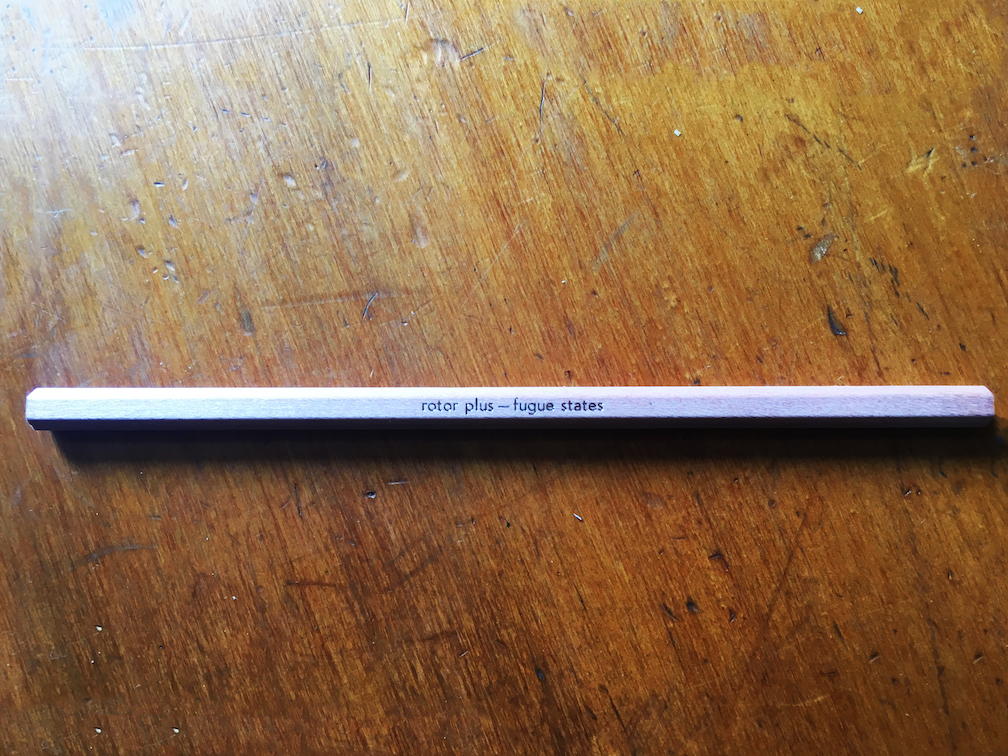


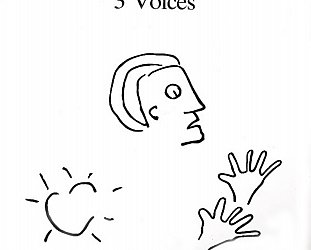
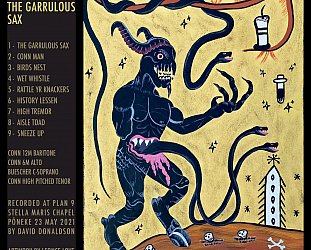
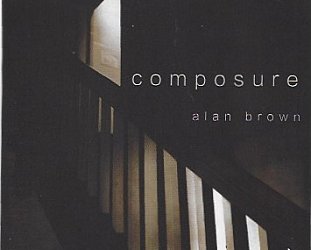

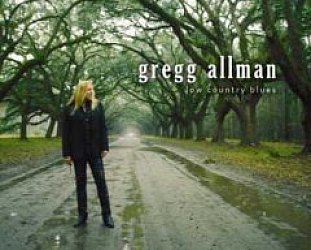
post a comment